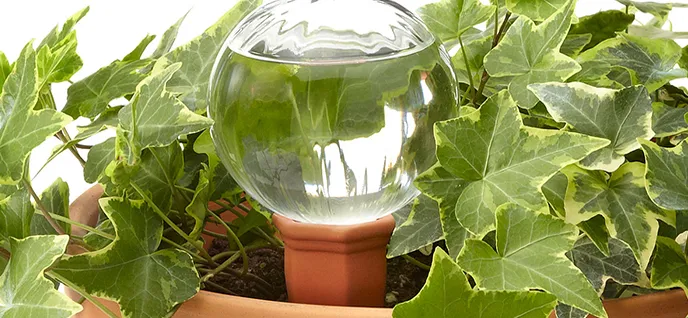Probably everyone who grows flowers at home has thought about self-watering plants systems.
Everyone had to leave plants unattended for a while, especially during summer family vacations. When you entrust the care of your plants while on vacation to relatives or neighbors, this in most cases leads to a significant loss of indoor plants, namely: plants withered or rotted roots from excessive watering, something broke, something crushed, etc. What to do to protect plants?
Going on vacation with the family, it is necessary to use old or new methods of automatic watering. Over time, more and more methods of self-watering appear. In a flower shop, you can buy special devices and entire systems to provide plants with water during your absence: a container for water of a certain size, a set of thin tubes and a control system that ensures the supply of water from the container at the required intervals. You only need to set the frequency and amount of watering, and you can safely go. But to avoid unwanted surprises, it is better to try in advance, before the vacation, how it works.
If you didn’t buy an automatic watering system, then you can come up with different ways to water plants.
Self-watering methods:
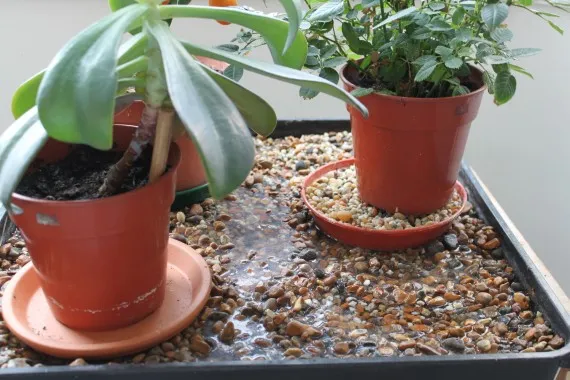
Self-watering: Tray watering
Plants need to be watered very well so that the soil is completely soaked with water. Put the pots in pallets or in wide basins with water so that the lower part of the pot is immersed in water (shallowly). It is even better to pour small pebbles or coarse sand into the pallet, pour water and place the plants, slightly sinking into the pallet.
This method of watering during vacation is suitable for undemanding plants that tolerate both excess moisture and drying out (chlorophytum, geranium, balsam, hamedorea palm).
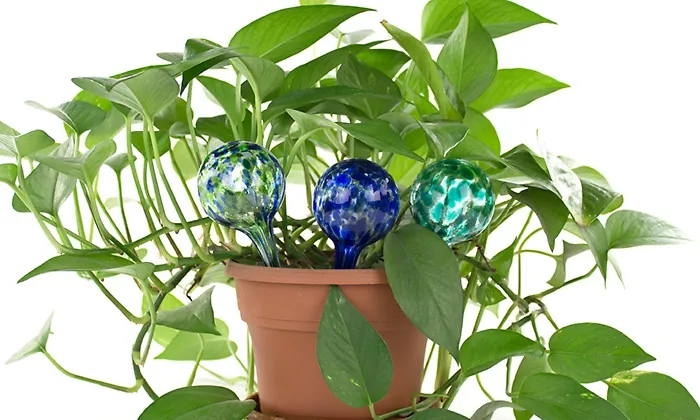
Aqua balls for plants
The simplest method of self-watering is called aquaballs. They consist of a glass bulb and are connected to a ceramic cone, which is immersed in the ground for more uniform moistening of the soil. Thanks to the capillary-porous structure of its walls, water seeps into the pot drop by drop. For large plants, it is recommended to use several such systems at the same time. The same system is used in ceramic cones. They are connected to water supplies using a thin hose.
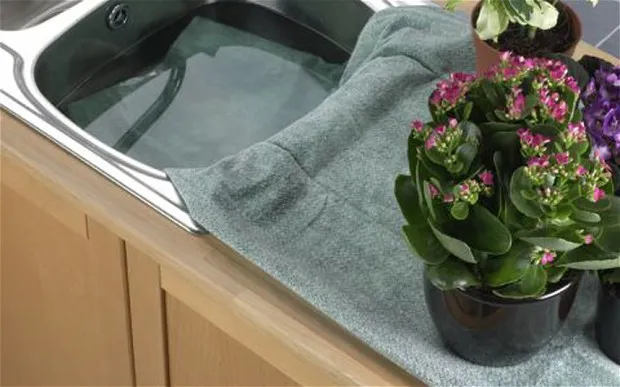
Capillary mats for self-watering
A good solution for passive irrigation can be capillary mats made of hygroscopic material. They are sold in many garden centers, and they are inexpensive (for home use, you should not buy capillary geotextiles made from recycled materials). The capillary mat can be spread on any flat surface, for example, on a table, by lowering one of its edges into a container with water. Be sure to put a film under the rug to protect the surface from moisture. If it is difficult to lower the end of the mat into a container with water, you can cut strips from its edge, wet them with water, and then lower one end into the container, and place the other under the mat.
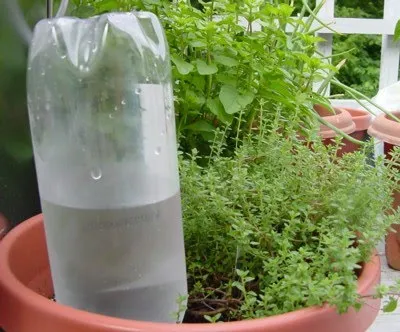
Plastic or glass bottle
Use a plastic or glass bottle for self-watering. The plant needs to be watered well. Take a plastic bottle with a cork. Next, heat it on fire with a thin needle, make 2 holes: one in the cork, the other at the bottom. Pour water into the bottle and fix it with the neck down. Water will constantly flow out in drops and moisten the soil.
Wash a glass bottle of wine or other drink, pour water, quickly turn it over and immerse it with the neck down and fasten it. So it is better to water large plants. Be sure to test this method some time before departure and see how much water drips in a day. If you choose the right bottle for each plant, the problem of watering during vacation will be solved.
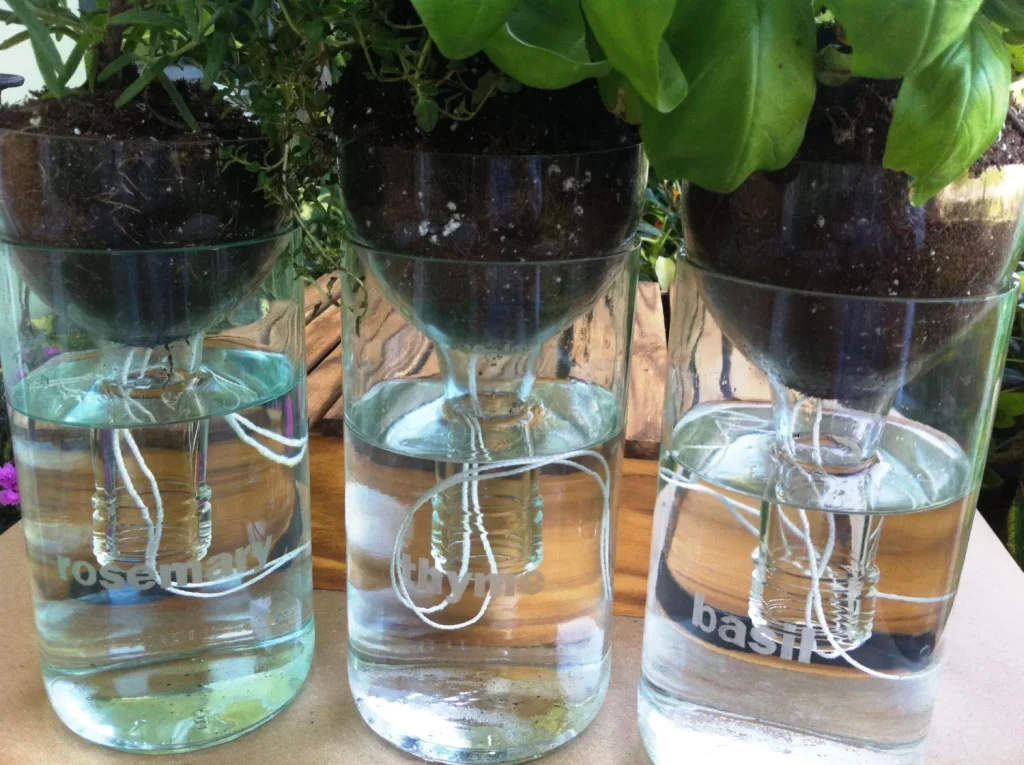
Wick watering
Self-watering with the help of a wick is a common method of constant watering for some plants, in particular Saint Paul (violets). The essence of the method is that the pot with the plant is constantly standing on a vessel with water. To ensure constant moisture, one end of a synthetic cord should be laid out in a ring in the soil under the plant, and its other end should be lowered into a vessel with water through the drainage hole. The cord should absorb water well. Water wets the cord along its entire length, rising from the vessel into the pot, and moistens the soil.
Minus of wick watering: sometimes, in hot weather, the wicks dry out and water does not reach the plants. On sale you can find ready-made wick systems for irrigation, consisting of a tank with water, a wick and a rod, made of porous ceramics for immersion in the soil.

Automatic watering system
Remember that all these methods are calculated for a maximum of one or two weeks of your absence. If you have to be away for a longer period of time, you cannot do without complex self-watering store systems. They are sold in a specialized flower shop. The devices are a container with water, a set of thin tubes and a control system. The system ensures that the water supply is turned on at certain time intervals, for example, 2 times a day.
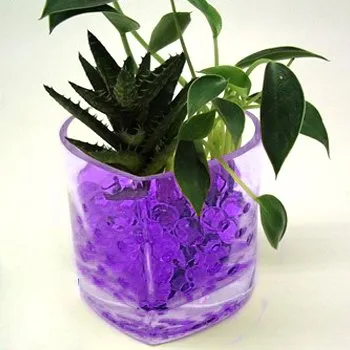
Use of hydrogel for self-watering
Hydrogel is a polymer that can absorb water in very large quantities and then slowly release it to plants. Sold in granules. The polymer is soft, colorless; quickly absorbs water, it is used to apply to the soil.
Indoor plants that are planted in a substrate with hydrogel are rarely watered. It is quite good to water the flowers before the vacation. In this case, you can not worry for a week, or even two. Plants will not rot or wither. Minus: plants must be planted in advance in such soil. You can also use decorative hydrogel in the form of colored balls. Pre-soak the granules for 6-8 hours. When they swell, pour them into pots on top of the substrate and cover with moss on top. The balls will gradually release moisture into the soil.
If the root system of plants is not superficial, then you can mix the top layer of soil with hydrogel balls.
In any case, both industrial and home-made humidification systems must be tested in advance. For example: trace the speed with which a particular wick conducts water, because it may turn out that after an hour or two the basin will be empty, and the plants will end up in a puddle of water. It is also important to choose a container of the appropriate size so that the plants have enough water, and to determine at what level, in relation to the pots, it is best to put it: at the same height, higher or lower.

